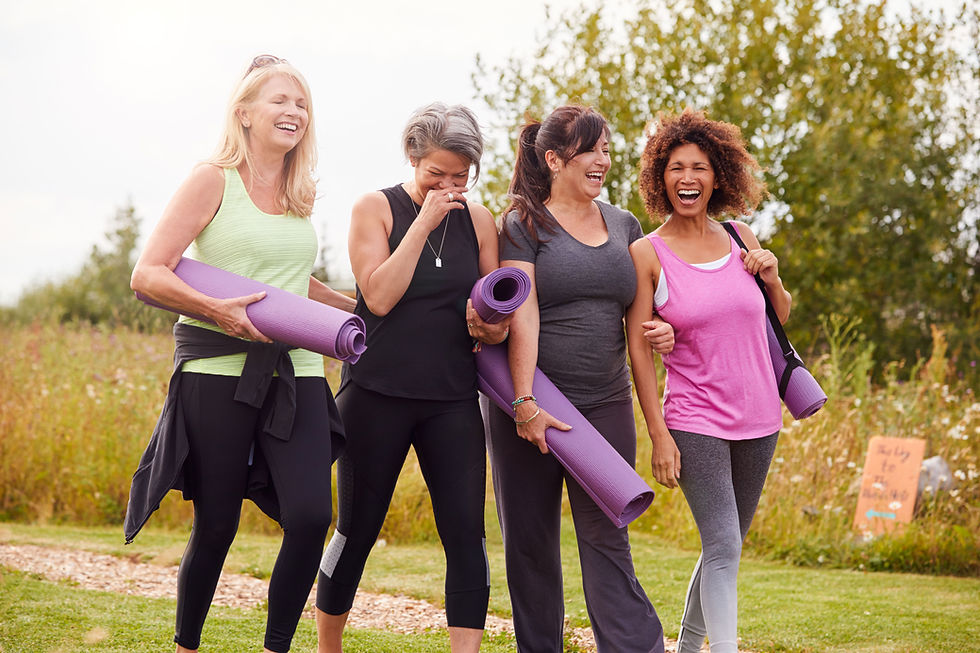A Yoga Teacher's Thoughts on "Body of Truth"
- Jessica Lucey

- Oct 5, 2023
- 3 min read
Updated: Nov 8, 2023
I love listening to and reading books that are seeming unrelated to yoga and then...
1) seeing how they're related to yoga or
2) applying yogic practices to key points.
On my plane ride back to the US from Santiago, Chile, I listened to Body of Truth: how science, history, and culture drive our obsession with weight — and what we can do about it by Harriet Brown.
The big takeaway?
Just because someone’s fat, doesn’t mean they’re not healthy… plus why the opposite belief exists and the science to break it down.
(I purposely used the word "fat" because it's such a triggering word and provides contrast to the word "healthy" in many minds. I usually use the phrase "larger body".)

As a yoga teacher who teaches ways to help you feel good in your body and mind, here are my thoughts (other than that it’s a great non-fiction read):
Everyone has some type of internalized bias against fat because diet culture is everywhere.
When you discover a bias through encountering someone else's opinion, you can get curious about it through the practice of svadhyaya (self study). Where did this come from? Why do I believe this? Work with these questions and any others that come up with a combination of ahimsa (non-violence) and satya (truth).
In other words,
Notice your thoughts.
Question, research, and meditate on if they're really true.
Have compassion for yourself when you learn something new and apply that knowledge to your life so you can do harm to less people.
Being physically active is better for your health than focusing on weight loss.
I’m a huge supporter of moving and enjoying the way you move. Physical activity can reduce the risk of disease and improve cardiovascular health, bone health, sleep quality, and your ability to do everyday activities.
I love adding in yoga and myofascial release to create balance in your body so you can continue doing the activities you enjoy -- hiking, biking, paddling, running, etc. -- for a longer period of your life with less pain.
The desire to actually care for you body instead of molding her to your will becomes more of a focus when you realize how strong and amazing your body is and what she helps you do.*
If you want an example of this and like an easy romance read, I recommend Savvy Sheldon Feels Good as Hell by Taj McCoy.

Eat when you’re hungry and stop when you’re full. Enjoy your food.
This is easier said than done.
You have to know what full and hungry feel like.
This is especially difficult if you’ve been dieting or have had an eating disorder. Your relationship with food affects your judgement, and your body sensations around food have changed.
Practicing yoga helps you become aware of your body sensations and thoughts. Most practices don't focus on the sensations of full or hungry, but becoming aware of body sensation is a good start. In asana (yoga poses), you move into shapes you don’t normally make. That new environment pulls you out of the engrained patterns in your movements and/or thoughts and helps you notice things that you might have become desensitized to or you weren’t aware of.
Yoga also helps you slow down and take notice. In my yoga classes I create slower transitions, such as lowering down into chaturanga to a count of 3 or 5, as a way to notice the change in muscle contraction along the way and build strength. When we center into class in my Paddleboard Yoga classes, I have students tune into their 5 senses. Eating is way more enjoyable when you're present and bring all your senses to the party.
What next?
Of course, there was way more information in the Body of Truth, such as bias in research, bias in the medical system, body image, food, and more. I definitely recommend reading the book, especially if you want to uncover blind spots around weight and body image.
This is my reminder to you that feeling good in your body is more than flexibility and relaxing. The relationship you have with your body impacts how you feel in your body. I invite you to examine that relationship through movement, journaling, or therapy. If you'd like help with the movement piece, book a call with me to see if we're a fit.
* Note: During my reading of Braiding Sweetgrass by Robin Wall Kimmerer, I learned that the Native American language brings "personhood" to trees, water, rocks, and other natural objects instead of using the pronoun "it". Your relationship to something with personhood is more caring as opposed to your relationship to something you label as “it”. I use “she/her” pronouns for my body instead of “it” because it gives my body personhood instead of the sense of an impersonal or inanimate object. You are free to use whatever pronouns you want for your body.



Jangan sampai ketinggalan update tentang slot gacor dari kabar4d.